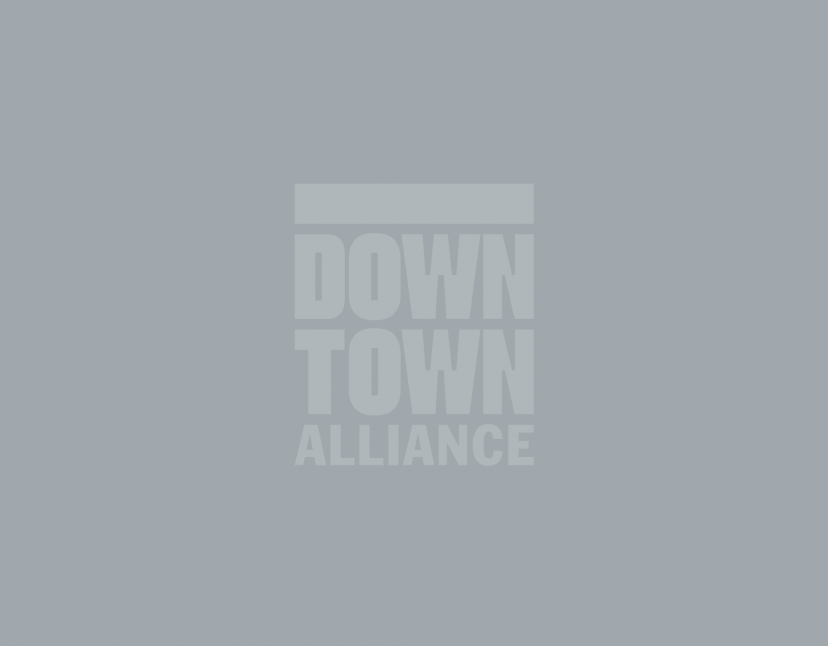DOWNTOWN DIALOGUE: It’s So Easy Being Green

Sorry Kermit, you’re dead wrong. It is easy being “green.”
And, as Lower Manhattan and New York City embrace the 21st century, sustainability – defined more than two decades ago by the UN World Commission on Environment and Development as “meeting the needs of the present without compromising the ability of future generations to meet their own needs”– is more important than ever. From the US Green Building Council’s LEED standards to Mayor Bloomberg’s PlaNYC to last Sunday’s New York Times Magazine’s infrastructure issue, the message is clear: go green!
400 years after Nieuw Amsterdam was founded at the foot of a forested island, Lower Manhattan offers a new model of a central business district, mixing commerce, residential life and tourism. Lower Manhattan’s scale, density and public transportation access are inherently sustainable, and that’s a major reason why companies continue to locate here, families choose to live here and visitors come by the millions. There’s a lot packed into our one square mile, which was recently voted one of America’s “most walkable neighborhoods.”
While the streams and wetlands Henryk Hudson claimed for the Dutch are long gone, Lower Manhattan’s green era is just beginning. At the Downtown Alliance, we’ve launched a series of green programs, big and small, which we intend to grow over time. Our Green Around Downtown initiative is designed to achieve three goals: reduce the district’s carbon footprint, build community around green activities and, spread the word to new businesses, commercial tenants, residents and government that Lower Manhattan is at the forefront of the green revolution.
Green Around Downtown starts internally. At the Downtown Alliance, we practice sustainable waste reduction and energy conservation in all our facilities and day-to-day operations, including paper recycling, “drive-to-web” marketing and information campaigns that use on-line resources instead of printed materials. And, you may have noticed that we’ve replaced tee-shirt give-aways with re-usable shopping bags!
Green Around Downtown also creates opportunities for people who live and work in Lower Manhattan to “green” our community together. More than 200 neighbors showed up last month for our second annual Spring Community Planting Day and, undeterred by the drizzle, planted flowers and shrubs in Wall Street Park. Last October, over a thousand folks “adopted” geraniums and over 100 planted Dutch tulip bulbs in Bowling Green Park during two days of Fall Community Planting. And, in early January, residents, property owners and commercial tenants recycled over 400 holiday trees in our inaugural Mulch Mania 2009.
On the transportation front, there’s no greener central business district in North America than Lower Manhattan: 90% of employees walk or take public transportation to work. 14 subway lines, 25 express and 8 local bus lines, the PATH and an ever-growing number of ferry routes criss-cross Lower Manhattan, moving roughly 130 million people a year through the bi-state region quickly, efficiently and sustainably. Within Lower Manhattan, the Downtown Alliance operates two public transportation alternatives: the Downtown Connection, our free, low-emissions shuttle bus service, with a new route along Warren and Murray Streets from North End Avenue to Broadway; and Bike Around Downtown, our seasonal, free bike rental program headquartered at the Seaport and available through our website, www.downtownny.com/bikearound/. Last year, 800,000 people rode the Downtown Connection and 5,000 used our bikes. Help us break these green records in 2009!
We are also encouraging local businesses to go green. Our dedicated Going Green Downtown website, https://downtownny.com/GoingGreen, offers information and advice on finding green space, negotiating green leases and reducing energy consumption. We convened a public seminar for small businesses on the subject, too. And, we are developing short- and long-term initiatives to brand Lower Manhattan as a green district, incentivize green interior construction and pilot new technologies that could reduce energy consumption and waste.
Lower Manhattan’s businesses, builders and property owners are going green. Silverstein Properties built 7 World Trade Center, the city’s first LEED Gold office building, and achieved Energy Star status for 120 Broadway. Goldman Sachs is following suit with its new headquarters, which will join nearly 5 million square feet of existing green real estate in Battery Park City, thanks to the Battery Park City Authority’s “green sustainability” requirements. Last year, the New York Marriott Downtown added a rooftop micro-turbine farm to self-generate low-emission electricity, while forward-thinking local restaurants like Bridgewaters and Picnick are packing outgoing orders with compostable and biodegradable tableware, including corn-flour utensils.
More commercial and residential buildings are switching to natural light, compact fluorescent bulbs, individually-controlled thermostats and low-water flow toilets and fixtures to conserve energy and other natural resources. And, organizations like the New York Academy of Sciences are keeping Lower Manhattan at the forefront of sustainable development. The Academy launched its Green Science and Sustainability program in fall 2006, and is a primary institution for furthering the reevaluation of environmental and energy strategies worldwide.
When the buildings at the World Trade Center site are completed, Lower Manhattan will have more than 16 million square feet of green space in 15 residential and commercial buildings. That could be a green world record. 400 years after Henryk Hudson first sailed up his eponymous river, Lower Manhattan is still the greenest part of Mannahatta!